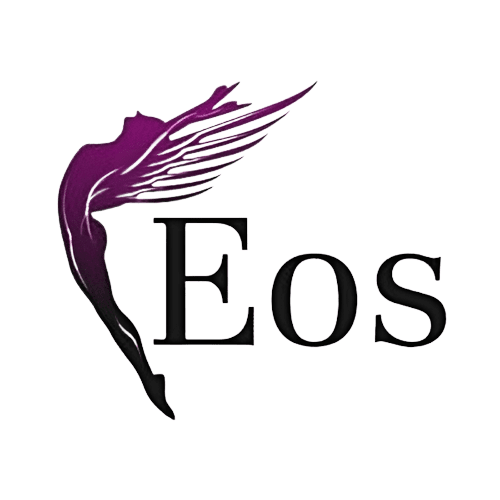Table of Contents
ToggleWe’ve laid out key risk mitigation strategies to help businesses prevent and prepare for any kind of setback
In the labyrinthian world of business operations, small enterprises often encounter a multitude of risks, each presenting a challenge to growth and stability. Navigating these treacherous waters requires a deft hand and strategic acumen, yet for the uninitiated, the prospect of plotting a course through uncertain terrain can be daunting.
However, much like a captain plotting by the stars, a small business can steer clear of disaster and even find its way to uncharted prosperity by effectively employing risk mitigation strategies. In this comprehensive guide, tailored for small business owners and risk managers, we will chart these strategies from inception to execution and beyond, with the aim of not only averting crises but fortifying your company for future endeavours.
Introduction to Risk Mitigation
Risk, for many small business owners, conjures a sense of unease. However, it’s the prudent anticipation and thorough management of risk that separates successful enterprises from those vulnerable to the capricious whims of an unpredictable market. But what exactly does it mean to mitigate risk for a small business, why is it essential, and where should one begin?
Defining Risk Mitigation
Risk mitigation is the proactive process of identifying, assessing, and addressing potential risks before they materialise into detrimental events. For small businesses, this can encompass financial risks such as market volatility, operational risks like supply chain disruptions, and strategic risks, which pertain to unseen market threats and opportunities.
The Importance of Risk Mitigation
Small enterprises are often less equipped to weather financial storms than their larger counterparts. A single lawsuit, natural disaster, or market shift can spell disaster. Understanding risk and taking measures to mitigate it is not only a savvy financial investment; it’s a gesture of fidelity to your stakeholders, your employees, and the vision you’ve set for your company.
Identifying Risks
The first step to risk mitigation is identification. What hazards lurk within the business’s day-to-day operations and external market forces, just waiting to strike? This section will outline a framework for identifying potential risks and threats to your small business.
Types of Risks
Small businesses face a plethora of possible risks. These can be broadly categorised into financial risks, strategic risks, compliance risks, and operational risks. By understanding the nature of these threats, you can begin strategic planning for their neutralisation.
Risk Assessment Techniques
From the basic SWOT analysis to more in-depth methods such as event trees and fault trees, various techniques are employed to assess risk for small businesses. Which tool will be most effective is dependent on the nature of your business and the unique risks it faces.
Implementing Risk Mitigation Strategies
With the dangers identified, the next step is crafting and implementing strategies to reduce their impact. Here we take an in-depth look at the risk mitigation arsenal for small businesses.
Insurance Coverage
Insurance is often the first line of defence for small enterprises. We will discuss various types of insurance plans, including general liability, property, and business interruption, and how each is pertinent to shielding your business from specific risks.
Small businesses should carefully assess their specific risks and needs when selecting insurance coverage. Working with an experienced insurance agent or broker can help ensure that businesses obtain adequate protection tailored to their unique circumstances.
General Liability Insurance
General liability insurance provides coverage for claims related to bodily injury, property damage, and advertising injury. It protects small businesses from third-party claims, such as slip-and-fall accidents on business premises or damages caused by products or services. This coverage helps pay for legal fees, medical expenses, and settlements in the event of a covered claim.
Property Insurance
Property insurance covers physical assets owned by a business, including buildings, equipment, inventory, and furniture. It protects against risks such as fire, theft, vandalism, and certain natural disasters. Property insurance helps businesses recover financially by reimbursing for repair or replacement costs of damaged or lost property.
Business Interruption Insurance
Business interruption insurance provides coverage for lost income and extra expenses when a business is unable to operate due to a covered peril, such as a fire or natural disaster. It helps cover ongoing expenses like rent, payroll, and utilities during the period of interruption. This type of insurance can be crucial for small businesses to maintain financial stability and continue operations after a disruptive event.
Emergency Preparedness Plans
Natural disasters and workplace accidents can be catastrophic for small businesses unprepared. A solid emergency preparedness plan ensures that no matter the scale of the disaster, your business can recover swiftly.
Contractual Risk Transfer
Properly structured contracts can transfer risk away from your business. Contractual risk transfer is a risk mitigation strategy commonly employed by small businesses to shift certain liabilities to other parties through contracts and agreements. This strategy involves the use of contractual clauses, such as indemnification and hold harmless provisions, to allocate risk to another party, typically a vendor, contractor, or client.
By including these clauses in contracts, small businesses can transfer responsibility for certain risks, such as property damage, bodily injury, or financial losses, to the party best equipped to manage or insure against them. Additionally, small businesses may require vendors and contractors to carry specific types and levels of insurance coverage to further protect against potential liabilities.
Employee Training
Human error is a significant factor in many business-related risks. Thorough and continuous training of your staff to handle equipment, interact with clients, and carry out protocols can significantly mitigate operational and compliance risks.

Risk Monitoring and Review
Strategies must not be static. They should evolve with your business and the environment in which it operates. This section covers the importance of consistent monitoring and review to ensure the efficacy of your risk mitigation strategies.
Regular Assessment and Adjustment of Strategies
Market landscapes are constantly shifting, especially with the advent of new technologies. Regular reviews of your risk mitigation strategies ensure that they remain relevant and effective in the face of the current and future business environments.
Key Performance Indicators for Risk Management
Key performance indicators (KPIs) are vital tools in measuring the performance of your risk management processes. We will identify and discuss KPIs that small businesses can use to track and optimise their risk mitigation strategies.
- Risk Exposure Index
This KPI quantifies the level of risk exposure the business faces. It could be measured by assessing factors such as market volatility, economic indicators, and industry-specific risks. By monitoring changes in the Risk Exposure Index over time, businesses can identify emerging threats and adjust their mitigation strategies accordingly.
- Risk Incident Rate
This KPI measures the frequency of risk events occurring within the business. It includes incidents such as security breaches, compliance violations, accidents, or supply chain disruptions. Tracking the trend of risk incident rates helps businesses understand their risk landscape and identify areas that require additional attention or resources for mitigation.
- Compliance Adherence
Compliance with regulatory requirements is essential for mitigating legal and financial risks. KPIs related to compliance adherence can include the percentage of regulatory requirements met, the number of compliance violations, or the frequency of audits passed successfully. Maintaining high levels of compliance reduces the likelihood of penalties and legal liabilities.
- Risk Response Time
This KPI measures how quickly the business responds to identified risks. It includes the time taken to assess risks, implement mitigation measures, and communicate response plans to relevant stakeholders. Monitoring risk response time ensures that potential threats are addressed promptly, minimising their impact on the business.
- Financial Risk Indicators
Financial KPIs such as cash flow stability, debt-to-equity ratio, and liquidity ratios provide insights into the business’s financial resilience against risks. A healthy financial position enables businesses to withstand economic downturns, unexpected expenses, or market fluctuations.
- Employee Training and Awareness
Human error is a common cause of risk incidents. KPIs related to employee training and awareness, such as training completion rates, competency assessments, and feedback on risk awareness programs, help businesses gauge the effectiveness of their efforts to educate and empower employees in risk management practices.
- Vendor and Supply Chain Risk
Many small businesses rely on vendors and suppliers for critical goods and services. KPIs related to vendor performance, supply chain disruptions, and supplier risk assessments help businesses identify vulnerabilities in their supply chain and implement measures to mitigate associated risks.
Conclusion
Effective risk mitigation is not merely a cost of doing business; it’s an investment in the security and longevity of your enterprise. By understanding the risks unique to your business, employing a comprehensive risk management strategy, and vigilantly monitoring and adapting to change, your small business can weather the storms and capitalise on the calm seas.
Eos Global Expansion has experts who can help you deftly navigate these risks. Check out our services and connect with us.







